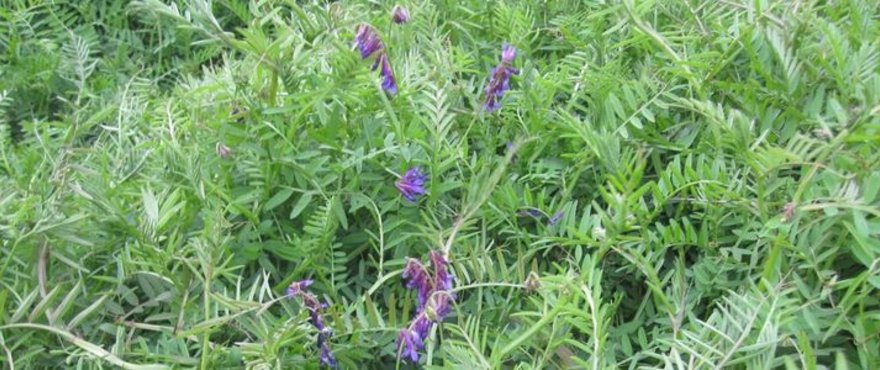Download a copy for the RM4 Woolly Pod Vetch factsheet.
RM4 woolly pod vetch was developed from the highly successful SARDI Vetch breeding program. RM4 has excellent early vigor which leads to better establishment (3–5 nodes form in about 45 days) than other varieties. It is earlier in flowering and grain/seed maturity, up to 10–15 days earlier than Haymaker or Capello. RM4 is soft seeded and was selected as a new woolly pod variety for dry matter and seed production in areas of rainfall <380mm/yr as well in higher rainfall areas >400–650mm/yr.
Key features
- Best early vigour of all lines in SARDI research trials
- Long term average dry matter yield 108% of Capello
- Early maturity, it can be cut for hay 10–15 days earlier than current varieties
- Soft seeded
- Good frost tolerance in international testing
Key benefits
- Multipurpose variety - can be used for hay/silage, grazing & green/brown manure
- Early vigor gives grower flexibility as they can graze or cut for hay quicker
- Improves soil fertility with nitrogen fixation, which benefits following crops
- Soft seeded means less volunteers in following years
Establishment
The recommended planting rate for RM4 Woolly Pod Vetch is: 15 – 35kg per hectare. Sowing rates are related to the end use targeted and rainfall areas. Higher rates are required for hay/silage, grazing and green manure (30–35kg/ha) and 15–20kg/ha used for grain/seed production. Sowing time is the same as other woolly pod vetches.
Agronomy and management
Paddock selection and basic requirements for growing RM4 are similar to other woolly pod vetch varieties. Good control of weeds in early growth stages is very crucial, as vetch are poor competitors to weeds in early growth stages, when vetch reaches 20–25cm height it is competitive with broadleaf and grassy weeds. Suitable to graze from 15 nodes up to finish of flowering. For hay/silage, cut in full flowering for the best balance of feed value. RM4, like other vetches is excellent for soil fertility/structure and nitrogen fixation. Turn into soil or desiccate at flowering time. RM4 was not sensitive to any herbicides recommended/registered for use in woolly pod vetch varieties. As with all woolly pod varieties, RM4 grain is toxic to stock and hence it is critical that hay or grazing occurs before pod set.
Performance
RM4 can be successfully grown, like other woolly pod varieties in many soil types. RM4 performs better in grain productions than other woolly pod varieties when season finishes sharply.
Disease / pest resistance
RM4 is moderately resistant to ascochyta blight. It is susceptible in early growth stages to red-legged earth mite and alfalfa flea, like other woolly pod vetch varieties. Also, RM4 is susceptible to blue-green and cowpea aphids from early growth through to pod maturity, as well as to native budworm during pod formation and filling.
Plant Breeders Rights (PBR): This variety is registered under Plant Breeders Rights (PBR) in Australia. Unauthorised commercial propagation or any sale, conditioning, export, import or stocking of propagating material is an infringement under the Plant Breeders Rights Act (1994). Any breach of this legislation will leave the grower liable for prosecution.
Disclaimer: The information presented in this brochure is from official and other sources and is considered to be reliable. It is provided in good faith and every care has been taken to ensure its accuracy. Barenbrug does not accept any responsibility for the consequences that may arise from the acceptance of recommendations or the suggestions made.


